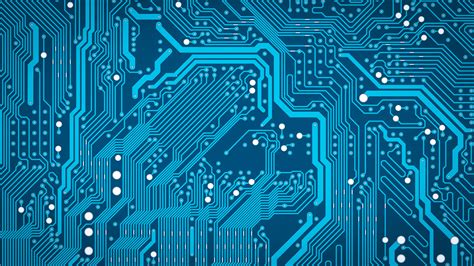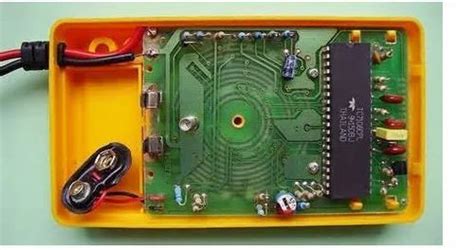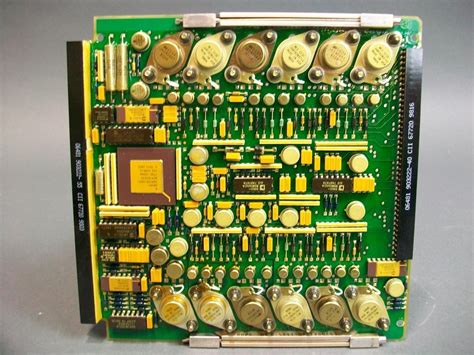Understanding Circuits and PCB Design for Modern Applications
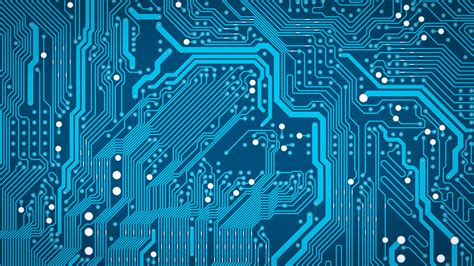
Key Takeaways
Understanding the importance of circuits and PCB design in today’s technology landscape cannot be overstated. You should recognize that printed circuit boards (PCBs) are at the heart of modern electronics, enabling devices to function efficiently and reliably. When you consider PCB manufacturing, it’s vital to acknowledge the intricate processes that transform initial designs into tangible products. Engaging with reputable PCB manufacturing companies can significantly impact your project’s success, as their expertise not only affects quality but can also influence your overall manufacturing cost.
Moreover, understanding the nuances of PCB manufacturing cost is essential for effective budgeting in any PCB-related project. The interplay between design complexity and material selection can lead to significant variations in manufacturing costs, emphasizing the need for careful planning. For those interested in venturing into the industry, starting a PCB manufacturing business offers numerous opportunities, particularly as technology continues to evolve. With emerging trends and innovations, staying informed about the latest advancements and best practices will empower you to make informed decisions that enhance both performance and viability in your designs.

Introduction to Circuits and PCB Design
Understanding the intricacies of circuit design and PCB (Printed Circuit Board) design is essential for anyone involved in electronics today. As devices become more sophisticated, so too must the methods used for their development. At its core, circuit design focuses on the arrangement of electronic components to create functional systems, while PCB design embodies the physical manifestation of these circuits in a reliable format.
The significance of PCB manufacturing cannot be overstated; it’s where concepts transform into reality. This process involves selecting appropriate materials and using advanced techniques to ensure that your circuits operate as intended. A solid understanding of material properties is crucial when choosing between options that affect performance, durability, and cost.
To provide a clearer picture, consider this table highlighting different aspects of PCB manufacturing:
| Aspect | Description |
|---|---|
| Types of PCBs | Rigid, Flexible, Rigid-flexible |
| Materials Used | FR-4, CEM-1, Polyimide |
| Manufacturing Cost | Varies based on complexity and material quality |
| Common Applications | Consumer electronics, automotive systems, medical devices |
When venturing into PCB manufacturing, it is worthwhile to explore various manufacturers within the industry; understanding how different pcb manufacturing companies approach production can help you make an informed decision for your specific needs. Keep an eye on associated costs as well since they can vary significantly based on complexity and time frames.
“In circuit design, you have to continuously balance performance with cost efficiency.”
This sentiment encapsulates a key factor in successful PCB development—ensuring reliability while managing budget considerations effectively.
As you embark on your journey into circuit and PCB design, remember that fostering strong partnerships with reputable PCB manufacturing businesses can greatly impact the success of your projects.
Fundamental Concepts of Circuit Design
When you delve into circuit design, it’s essential to grasp the foundational components that drive the functionality of your electronic projects. At its core, a circuit comprises various electrical components like resistors, capacitors, and transistors that interact to perform specific tasks. Understanding these elements and their relationships allows you to create effective designs while keeping an eye on factors like efficiency and performance. One crucial aspect you’ll encounter is the significance of utilizing optimal circuit layouts that can minimize interference and signal loss in your designs.
Moreover, while contemplating your PCB design, you’ll need to consider the pcb manufacturing process. It’s vital to select reputable pcb manufacturing companies that adhere to industry standards, as not all manufacturers guarantee the quality required for effective performance. The choice of materials used in your PCB will influence not just the cost but also the overall performance of your circuit. In addition, scrutinizing pcb manufacturing cost can help you budget effectively for your project. Remember, investing in high-quality components during the initial stages can save money in the long run by preventing reliability issues down the line—a critical factor in any successful pcb manufacturing business. By understanding these fundamental concepts, you’re setting a strong foundation for more advanced explorations in circuit design and PCB technologies.
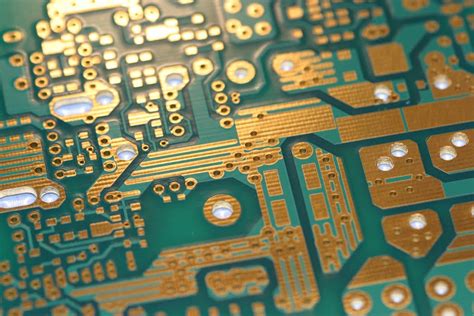
Understanding PCB Construction and Materials
When diving into the world of PCB (Printed Circuit Board) design, grasping the fundamentals of construction and materials is crucial for achieving high-quality results. The backbone of any PCB lies in its materials, which directly influence its performance and durability. Common materials include FR-4, a flame-retardant fiberglass, known for its balance of excellent electrical properties and mechanical strength. Other materials like CEM-1 and CEM-3 are also frequently used due to their favorable characteristics in various applications. When you consider the PCB manufacturing process, remember that the choice of materials significantly affects the PCB manufacturing cost.
Engaging with reputable PCB manufacturing companies can ensure that you receive expert advice on which materials best suit your project needs. The reliability of your circuit largely hinges on correct material selection, which consequently impacts the overall quality and functionality of your device. As you contemplate entering the PCB manufacturing business, understanding material properties is essential in order to deliver superior products that meet contemporary market demands. By prioritizing quality materials in your designs, you’re not just adhering to industry standards, but you’re also enhancing the longevity and efficiency of electronic components. This knowledge equips you to make informed decisions that will positively affect your project’s outcome as well as its overall success in a competitive landscape.
Modern Applications of PCB Technology
The realm of PCB technology has significantly evolved, leading to innovative solutions across various industries. Today, PCB manufacturing plays a pivotal role in sectors such as consumer electronics, automotive, healthcare, and telecommunications. As you dive into modern applications, consider how pcb manufacturing companies are adapting to meet the growing demand for miniaturization and higher functionality. For instance, the use of flexible PCBs can be seen in smartphones, allowing for sleek designs while maintaining performance. Additionally, in medical devices, custom PCBs contribute to better diagnostics and patient monitoring by integrating sensors and communication modules. Understanding the implications of pcb manufacturing cost is essential, as it directly affects product pricing and competitiveness in a fast-paced market. With the rise of IoT devices and smart technology, the pcb manufacturing business is witnessing a surge in demand for prototypes that allow rapid iterations and improvements in design. By recognizing these modern applications, you can appreciate how critical PCB technology is to advancing innovation while also navigating the ever-changing landscape of electronic design and production.
Manufacturing Processes for PCBs
The pcb manufacturing process is a critical component of modern technology, shaping the devices that you rely on daily. Understanding this process requires a grasp of various techniques used by pcb manufacturing companies, which employ both traditional and cutting-edge methods to create printed circuit boards that meet specific requirements. The journey begins with the design, where an accurate representation of the circuit is molded into a layout. From there, several manufacturing steps follow, including etching, drilling, and soldering, each playing an integral role in ensuring functionality and durability.
Furthermore, pcb manufacturing cost can significantly vary based on materials used, complexity of the design, and scale of production. Smaller batches often lead to higher costs per unit compared to larger quantities due to economies of scale. This factor makes it essential for businesses venturing into pcb manufacturing business to consider their production volume when planning their budgets. By optimizing their processes and sourcing quality materials, manufacturers can enhance reliability while keeping production costs manageable.
This phase not only emphasizes quality control but also underlines the importance of adhering to industry standards to ensure that each board can withstand the demands placed upon it in various applications. In navigating this intricate field, you empower yourself with knowledge about how these processes form the backbone of effective circuit design while appreciating the significant impact they have on contemporary electronics.
Importance of Reliability in Circuit Design
In today’s technology-driven environment, the reliability of circuit designs is of paramount importance. When you consider that modern applications can range from consumer electronics to critical medical devices, the stakes are incredibly high. Circuit failures can lead to significant operational costs and safety concerns, making it essential to focus on dependable design choices. For instance, incorporating high-quality materials and adopting rigorous testing practices during pcb manufacturing can greatly enhance durability and performance. Collaborating with reputable pcb manufacturing companies ensures that you are utilizing the best components available, which in turn reduces the overall pcb manufacturing cost by minimizing defects and failures. You should also be aware of the evolving standards in reliability testing; ensuring that your designs meet these requirements is crucial for establishing a strong pcb manufacturing business reputation. In essence, your commitment to reliability not only improves product performance but also fosters trust with end-users and stakeholders alike, solidifying your position in a competitive marketplace. By making reliability a top priority in your circuit design process, you can contribute significantly to the overall success of various technology applications.
Advanced Techniques in PCB Design
In the realm of PCB design, advanced techniques have emerged to optimize performance and efficiency in modern electronics. One of the most crucial aspects you should consider is the role of pcb manufacturing processes that integrate cutting-edge technologies. Techniques such as signal integrity analysis and thermal management are essential to prevent issues that could arise from high-frequency signals and excessive heat. Utilizing multilayer PCBs can significantly enhance the performance by allowing more complex circuits within a compact space.
Moreover, it is important to collaborate with reputable pcb manufacturing companies, as they can offer insights into materials and technologies that will enhance your designs. The choice of materials directly influences the overall pcb manufacturing cost; therefore, selecting optimal substrates is key for balancing performance and budget. Additionally, adopting practices like design for manufacturability (DFM) ensures that your designs not only perform well but are also viable for large-scale production, thereby making your pcb manufacturing business more competitive in the market.
Incorporating simulation tools during the design phase can further refine your approach, allowing you to test for various scenarios before committing to production. This proactive strategy ensures reliability, enhancing the end product’s durability and functionality in real-world applications. As technology continues to evolve, staying abreast of these advanced techniques is essential for achieving an edge in PCB design and manufacturing.
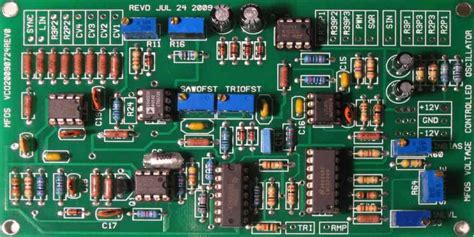
Future Trends in Circuits and PCB Applications
As technology continues to evolve, the demand for innovative circuits and PCB designs is on the rise. One notable trend is the increasing use of flexible PCBs, which allow for compact and lightweight designs suitable for wearable technology and other applications. The shift toward miniaturization in devices fuels the need for advanced conductive materials that can reduce weight while maintaining high performance. Additionally, automated PCB manufacturing processes are seeing a boost, allowing for faster production times and greater precision, which minimizes manufacturing costs. As you explore different pcb manufacturing companies, you’ll notice a focus on sustainable practices; many now prioritize environmentally friendly materials and processes. This shift not only addresses consumer demand for eco-conscious products but also enhances brand reputation in a competitive market. The rise of the Internet of Things (IoT) further drives innovation, as devices become increasingly interconnected, necessitating more sophisticated circuit layouts and integration techniques across PCBs. Understanding these trends is essential as they shape the future landscape of your business or projects in the field of electronics, making your knowledge of current methodologies and costs crucial in navigating this rapidly changing environment. Keeping abreast of these advancements will empower you to make informed decisions when selecting partners in the pcb manufacturing business, ensuring you stay ahead of the curve.
Conclusion
In conclusion, understanding the intricacies of circuits and PCB design is essential for anyone involved in modern technology. As you delve into the world of PCB manufacturing, it becomes clear that the choices made during the design phase significantly impact the overall performance and efficiency of electronic devices. The importance of selecting the right PCB manufacturing companies cannot be overstated; their expertise can influence aspects such as durability, functionality, and cost-effectiveness. Furthermore, by assessing the various pcb manufacturing costs, you can make informed decisions that align with your budgetary constraints while ensuring high-quality output. Establishing a robust pcb manufacturing business involves not just understanding design but also adhering to industry standards that guarantee reliability and safety in your final products. As you navigate this essential field, keep in mind that a strong foundation in circuit design will not only enhance your project outcomes but also position you well for future innovations in technology.
FAQs
What is PCB manufacturing?
PCB manufacturing refers to the process of creating printed circuit boards (PCBs) that are essential for electronic devices. This process involves various steps, including design, material selection, and assembly.
What should I consider when choosing PCB manufacturing companies?
When selecting PCB manufacturing companies, consider their reputation, cost-effectiveness, and the technology they use. You should also evaluate their ability to meet your specific design requirements and delivery timelines.
How does the PCB manufacturing cost vary?
The PCB manufacturing cost can vary based on several factors, including the complexity of your design, the type of materials used, and the volume of production. High-quality materials and intricate layouts generally lead to higher costs.
Is it profitable to start a PCB manufacturing business?
Yes, starting a PCB manufacturing business can be profitable if you identify a niche market and provide high-quality products. Understanding market trends and establishing strong supplier relationships can help in building a successful business.
For further insights on PCB manufacturing and to explore reputable manufacturers in the industry, please click here.

